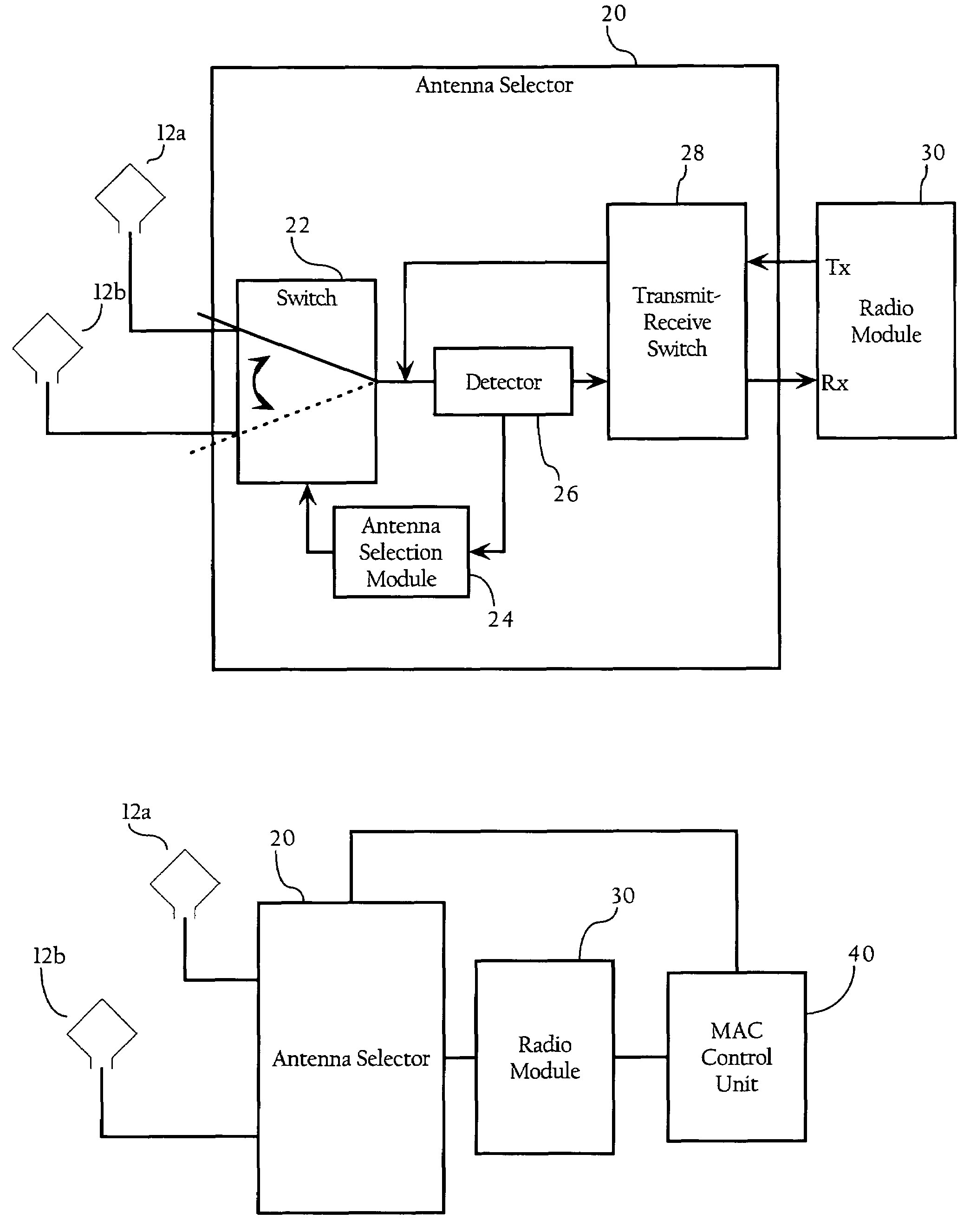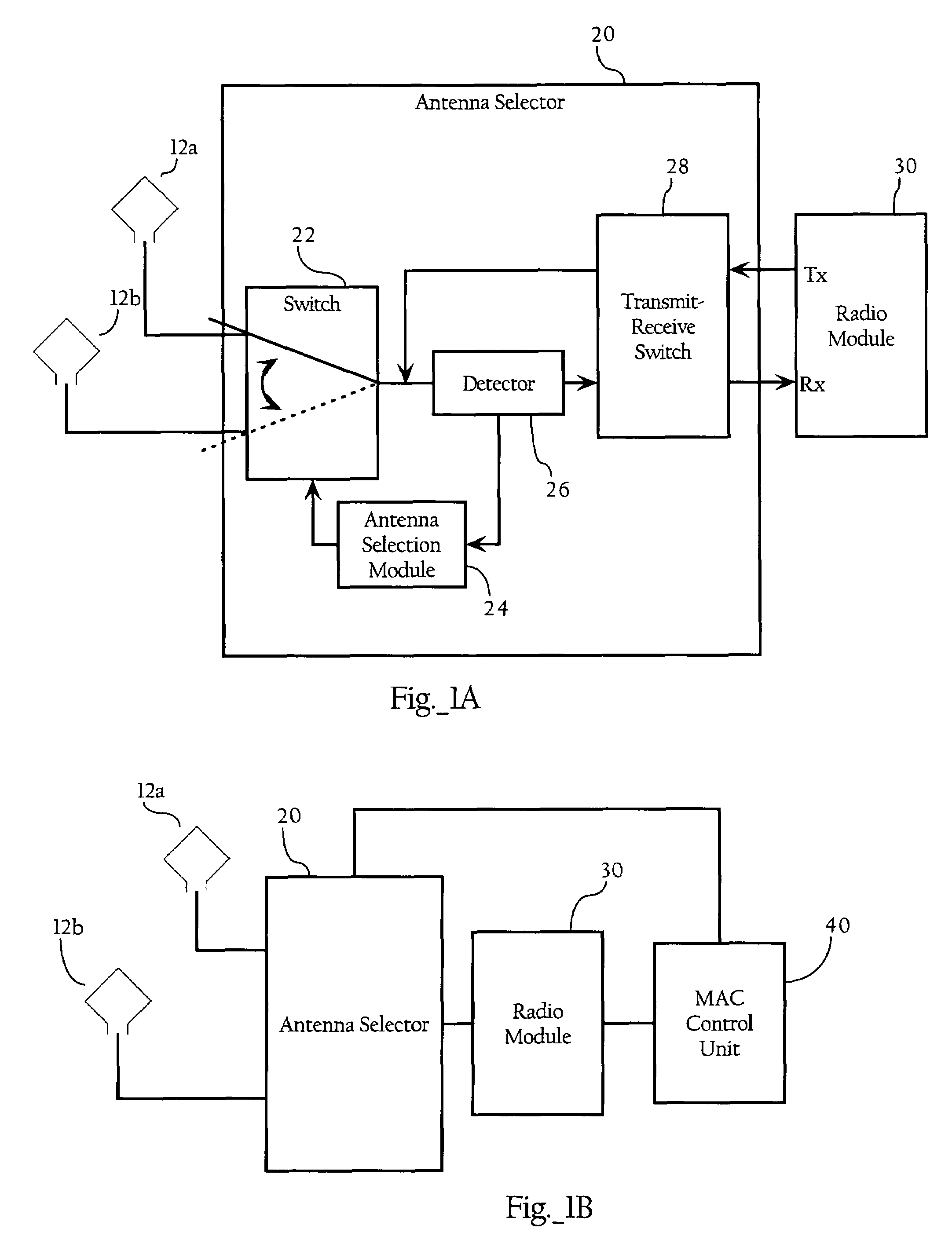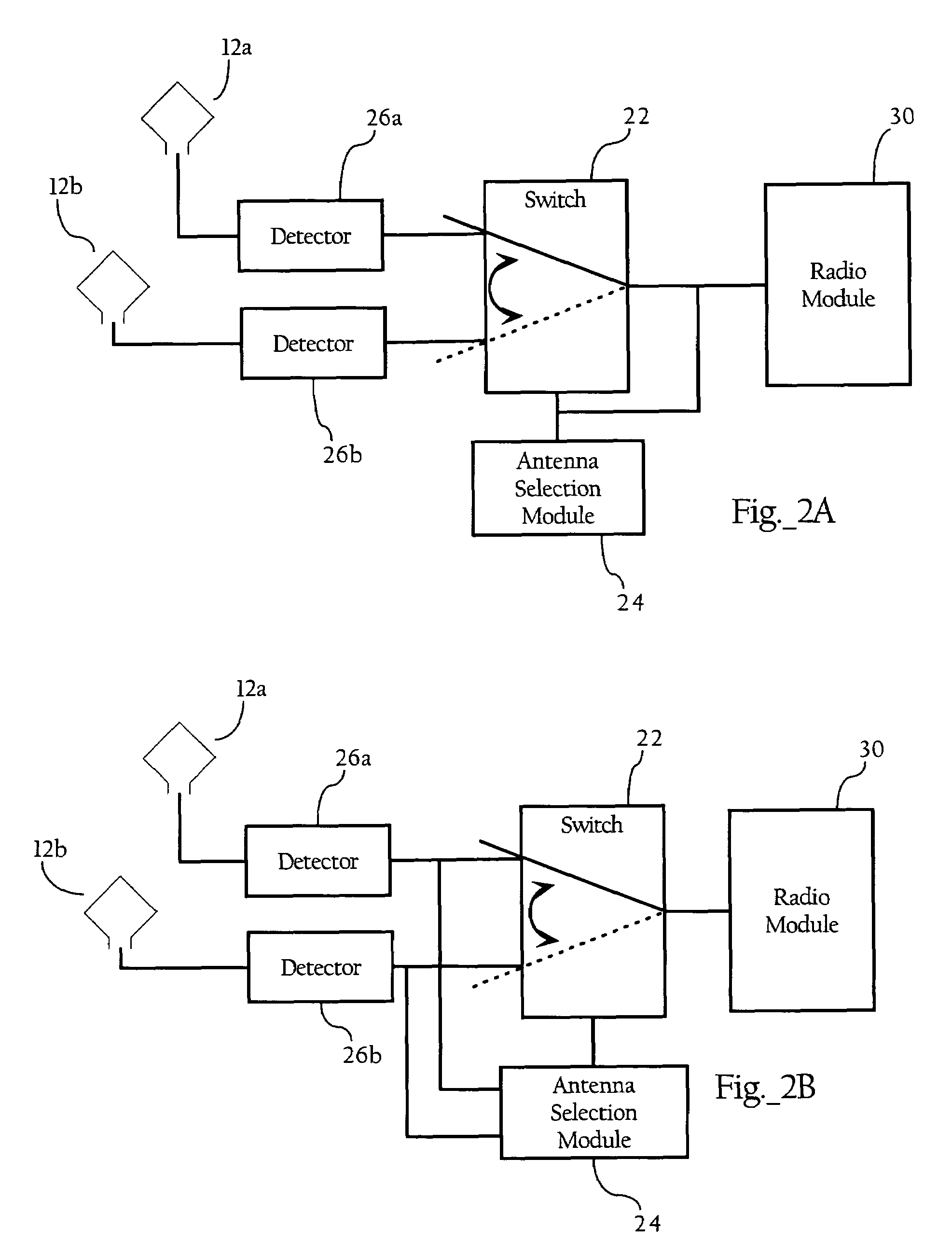Non-overlapping antenna pattern diversity in wireless network environments
a wireless network and antenna pattern technology, applied in antennas, electrical equipment, radio transmission, etc., can solve the problems of weak resultant signal (destructive interference), weak resultant signal (constructive interference), and interference at the receiver that must be addressed
- Summary
- Abstract
- Description
- Claims
- Application Information
AI Technical Summary
Benefits of technology
Problems solved by technology
Method used
Image
Examples
Embodiment Construction
)
[0019]FIG. 1A illustrates an antenna selector 20, according to an embodiment of the present invention. As FIG. 1B illustrates, the transmit receive unit 20, in one embodiment, is part of a wireless network interface unit 60 comprising antennas 12a, 12b, antenna selector 20, radio module 30, and MAC control unit 40. In one embodiment, the functionality described herein can be implemented in a wireless network interface chip set, such as an 802.11 network interface chip set. Radio module 30 includes frequency-based modulation / demodulation functionality for, in the receive direction, demodulating radio frequency signals and providing digital data streams, and in the transmit direction, receiving digital data streams and providing frequency modulated signals corresponding to the digital data stream. In one embodiment, radio module 30 is an Orthogonal Frequency Division Multiplexed modulation / demodulation unit. In one embodiment, radio module 30 implements the OFDM functionality in a ma...
PUM
 Login to View More
Login to View More Abstract
Description
Claims
Application Information
 Login to View More
Login to View More - R&D
- Intellectual Property
- Life Sciences
- Materials
- Tech Scout
- Unparalleled Data Quality
- Higher Quality Content
- 60% Fewer Hallucinations
Browse by: Latest US Patents, China's latest patents, Technical Efficacy Thesaurus, Application Domain, Technology Topic, Popular Technical Reports.
© 2025 PatSnap. All rights reserved.Legal|Privacy policy|Modern Slavery Act Transparency Statement|Sitemap|About US| Contact US: help@patsnap.com



